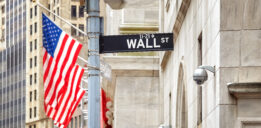Investment Bank Believes Stock Market Crash 2019 Will See S&P 500 Drop by 23%
With brand new S&P 500 forecasts just out, Wall Street is offering up more of the same. Hardly any banks are predicting a market drop in 2018, despite the multi-year run in prices leaving equities firmly overvalued and overbought. For the past few years, the banks have been right. But this year, one investment bank is bucking this Thanksgiving tradition. Societe Generale Group (SocGen) is predicting a stock market crash in 2019, even if 2018 is just the calm before the storm.
Citing a confluence of negative catalysts, SocGen strategist Roland Kaloyan simply isn’t buying the bullish narrative. While the full scope of his analysis is beyond the parameters of this article, I would summarize it this way:
With rising interest rates; a steepening yield curve; the business cycle in late-stage or peaking; an epic short-squeeze possibility with everyone; short volatility; stocks priced past perfect; and likely valuation contraction as a consequence of all the factors mentioned, get out…yesterday!
Kaloyan notes that the S&P 500 has already breached its S&P 500 FY2018 target of 2,500. This isn’t the first warning that SocGen has presented to investors. That was breached in the back half of September.
But with this latest warning, he posits the market is now entering expensive territory. So expensive that Kaloyan notes that “on all the metrics, US equities are trading at levels only seen during the late-90s bubble.” (Source: Durden, T., Get Out Now: SocGen Predicts Market Crash, Bear Market For The S&P, Zero Hedge, November 23, 2017.)
Assorted Analyst S&P 500 Price Targets, FY2018
| Bank | Analyst | FY 2018 Price Target | Market EPS | Market P/E Ratio |
| Bank of Montreal | Brian Belski | 2,950 | $145.00 | 20.3x |
| UBS | Keith Parker | 2,900 | $141.00 | 20.6x |
| Canaccord | Tony Dwyer | 2,800 | $140.00 | 20.0x |
| Credit Suisse | Jonathan Golub | 2,875 | $139.00 | 20.7x |
| Deutsche Bank | Binky Chadha | 2,850 | $140.00 | 20.4x |
| Goldman Sachs | David Kostin | 2,850 | $150.00 | 19.0x |
| Citigroup | Tobias Levkovich | 2,675 | $141.00 | 19.0x |
| HSBC | Ben Laidler | 2,650 | $142.00 | 18.7x |
That’s pretty darn pricey, considering all the risks cited earlier on. Remember, this “bubble” differs from the 1990s insofar that everything is expensive. Two decades ago, the insanity was mostly contained to Internet-related industries and biotech stocks.
When the market eventually cratered, there were pockets in the market where investors could go to shield themselves from the onslaught. This time around, where that safe haven may be is much less clear.
SocGen More Sanguine on 2018 Market Prospects
If there’s any “good” news in this equation, it’s that SocGen does not project a market crash in 2018. They’re sticking with a FY2018 price target of 2,500 (same as 2017), as negative catalysts slowly begin to crystallize. That leaves investors plenty of additional time to re-balance their portfolios and strategize with their financial advisers.
Even though the market is almost tied with 1929 as the second-most expensive period in history—as judged by the well-respected cyclically adjusted price-to-earnings (CAPE) ratio—it doesn’t mean the fireworks will start right away.
Not only have the SocGen focus catalysts failed to ripen (yet), but the effects of quantitative tightening, or in layman’s terms, money draining from the Federal Reserve balance sheet (the opposite of quantitative easing), have yet to kick in. That may be the biggest black swan of all.
The Fed announced in September that it would not be reinvesting bonds up to set limits as they mature. The net effect: $50.0 billion per month will exit the monetary base by late next year, threatening a major source of capital inflow into the markets. Yet, somehow, many investors seem to be buying into the Fed narrative that the event will be like “watching paint dry.” I beg to differ.
This event alone is enough to give me pause. Combine it with Roland Kaloyan’s stock market crash 2019 prediction, and I become downright jittery.






